A rotor with DNA origami parts held together by an engineered tight fit instead of by covalent bonds can revolve freely, driven by Brownian motion and dwelling at engineered docking sites.
Tightly-fitted DNA parts form dynamic nanomachine
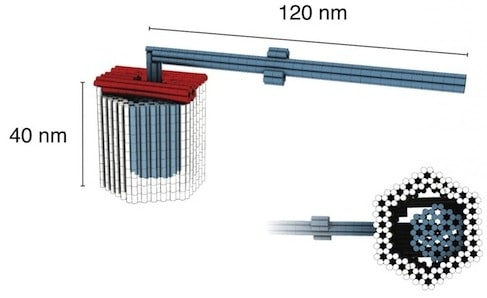

A rotor with DNA origami parts held together by an engineered tight fit instead of by covalent bonds can revolve freely, driven by Brownian motion and dwelling at engineered docking sites.
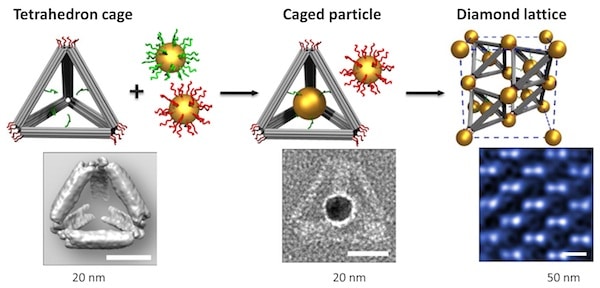
Two research teams present two different methods for using single strands of DNA to link various nanoparticles into complex 3D arrays: one using DNA hairpins for dynamic reconfiguration and the other using a DNA origami scaffold.

Encapsulating enzymes in nanocages engineered using structural DNA nanotechnology increases enzymatic digestion and protects enzymes from degradation.

New families of protein structures, barrel proteins for positioning small molecules, self-assembling protein arrays, and precision sculpting of protein architectures highlight de novo protein design advances.
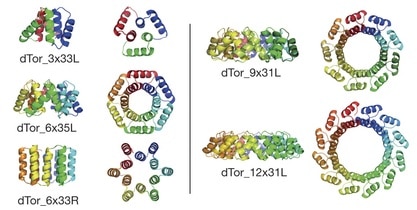
Computational design of proteins satisfying predetermined geometric constraints produced stable proteins with the designed structure that are not found in nature.
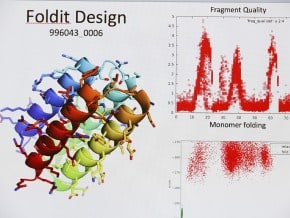
A fully automated design protocol generates dozens of designs for proteins based on helix-loop-helix-loop repeat units that are very stable, have crystal structures that match the design, have very different overall shapes, and are unrelated to any natural protein.
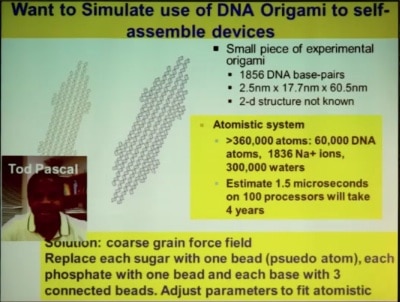
Prof. William Goddard presented four advances from his research group that enable going from first principles quantum mechanics calculations to realistic nanosystems of interest with millions or billions of atoms.

DNA building blocks mimic biological ion channels to more precisely control which molecules can cross a biological membrane.

A molecular robotic arm synthesized from small synthetic organic molecules uses cyclic changes in pH and other reaction conditions to grab and release a cargo molecule, and swing the cargo back and forth between the two ends of the molecular platform.

Highly correlated electron motions resembling electron liquids rather than electron gases, and found in some transition metal oxides, may enable inexpensive substitution for expensive displays.